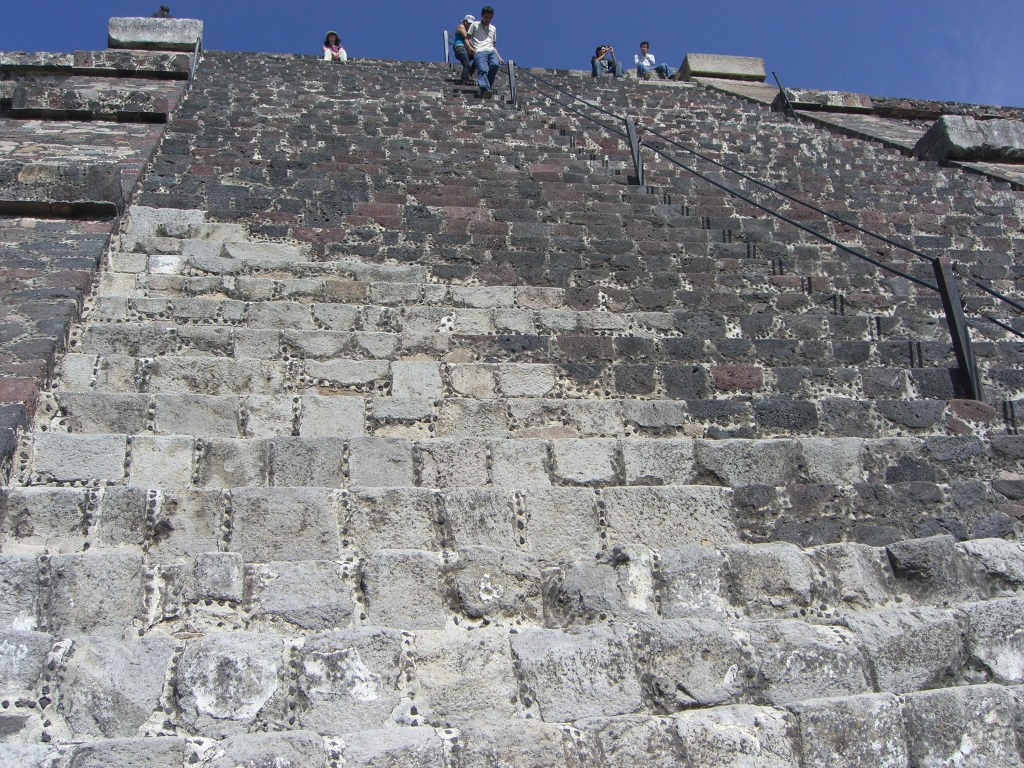Thanks to everyone who participated in the Where Am I? game. That was fun. And now, the answer…
Author Archives: T. Ryan Gregory
Where am I? – 3
Last clue before I reveal the answer!

Where am I? – 2
A slightly easier clue this time…

Where am I?
Easy question… where am I (not a trick — I just took this picture)?

Pfffffffffft!
From the Max Planck Institute for Chemical Ecology comes a press release describing a paper in Nature about bacterial evolution…
Bacteria Expect the Unexpected
Organisms ensure the survival of their species by genetically adapting to the environment. If environmental conditions change too rapidly, the extinction of a species may be the consequence. A strategy to successfully cope with such a challenge is the generation of variable offspring that can survive in different environments. Even though a portion of the offspring may have a decreased chance to survive, the survival of the species as a whole is guaranteed. For the first time scientists have now observed the evolution of such a strategy under lab conditions in an experiment with the bacterial species Pseudomonas fluorescens: A bacterial strain exposed to rapidly changing environmental conditions developed the ability to generate variable offspring without additional mutations. This new strategy ensured the survival of the bacterial strain. The results were published in NATURE. (05.11.2009).

10,000 genomes.
Lots of genomes going to be sequenced. Some of the members of the group are colleagues at Guelph. Very cool. That is all.
Genome 10K: A Proposal to Obtain Whole-Genome Sequence for 10 000 Vertebrate Species
Genome 10K Community of Scientists
The human genome project has been recently complemented by whole-genome assessment sequence of 32 mammals and 24 nonmammalian vertebrate species suitable for comparative genomic analyses. Here we anticipate a precipitous drop in costs and increase in sequencing efficiency, with concomitant development of improved annotation technology and, therefore, propose to create a collection of tissue and DNA specimens for 10 000 vertebrate species specifically designated for whole-genome sequencing in the very near future. For this purpose, we, the Genome 10K Community of Scientists (G10KCOS), will assemble and allocate a biospecimen collection of some 16 203 representative vertebrate species spanning evolutionary diversity across living mammals, birds, nonavian reptiles, amphibians, and fishes (ca. 60 000 living species). In this proposal, we present precise counts for these 16 203 individual species with specimens presently tagged and stipulated for DNA sequencing by the G10KCOS. DNA sequencing has ushered in a new era of investigation in the biological sciences, allowing us to embark for the first time on a truly comprehensive study of vertebrate evolution, the results of which will touch nearly every aspect of vertebrate biological enquiry.
http://www.nature.com/news/2009/091104/full/462021a.html
Another, um, good reason to care about genome sizes.
You denizens of the science blogosphere probably will have heard about the, shall we say, “questionable” article by Donald Williamson (and communicated by Lynn Margulis) in PNAS, in which he claimed that insect larvae arose via hybridization between non-metamorphosing ancestral insects and Onychophora (velvet worms).
 Maybe this sounds silly to you. Me too. It also sounded silly to Hart and Grosberg (2009), who thoroughly debunk the hypothesis using data that were already easily available. You can read a play by play of the refutation over at Jerry Coyne’s blog Why Evolution Is True and in Scientific American.
Maybe this sounds silly to you. Me too. It also sounded silly to Hart and Grosberg (2009), who thoroughly debunk the hypothesis using data that were already easily available. You can read a play by play of the refutation over at Jerry Coyne’s blog Why Evolution Is True and in Scientific American.
So, if it’s already been discussed on a popular blog, why bring it up again? Because this one relates directly to my area of research, and the subject of many a post here on Genomicron — genome size.
One of the “predictions” given in Williamson’s paper is that species of insects with complete metamorphosis (holometabolous development) will exhibit evidence of a merger of insect and onychophoran genomes, and thus have larger DNA amounts. It so happens that a) this is bass-ackwards, and b) it is easy to find this out by checking my Animal Genome Size Database (which is what Hart and Grosberg did) or my paper in Genetica from 2002 or my book from 2005 or pretty much any decent paper on insect genome sizes in the last several years.

From Gregory (2005).
I often have to summarize reasons why people should care about genome size, as when preparing grant applications. I never thought that I could add to this list, “refuting nutty hypotheses about the origins of caterpillars”. I won’t, though, even if many of the data used in the comparison were generated by me or my students (including pretty much all the Lepidoptera estimates).
But, on a more positive note, this flap did draw attention to velvet worms, which are pretty cool:
_________
References
Gregory, TR. 2002. Genome size and developmental complexity. Genetica 115: 131-146.
Gregory, TR. 2005. Genome size evolution in animals. In: The Evolution of the Genome, ed. TR Gregory. Elsevier, San Diego, p. 3-87.
Hart, MW and Grosberg RK. 2009. Caterpillars did not evolve from onychophorans by hybridogenesis. Proc. Natl. Acad. Sci. USA, in press.
Williamson, D.I. 2009. Caterpillars evolved from onychophorans by hybridogenesis. Proc. Natl. Acad. Sci. USA 106:15786–15790.
Nature vs. hype.
From today’s Nature, an editorial entitled Mind the spin:
Scientists — and their institutions — should resist the ever-present temptation to hype their results.
[skipping to the money quote…]
…the temptation for scientists and their institutions to spin their research to the media, or to go publicity-mongering, is always there. And — as illustrated by the excessive public-relations campaign surrounding Ida, a fossil presented as a missing link in human evolution — too many in the media will buy into the initial hype.
Such behaviour is corrosive to the process of scholarly scientific communication. Research institutions must not allow it to become the norm.
Isn’t email supposed to save us time?
Me:

Microbial Art is alive!
I am happy to report that my latest distraction project is now live!
Visit www.microbialart.com for lots of intriguing artworks created using living microorganisms.
